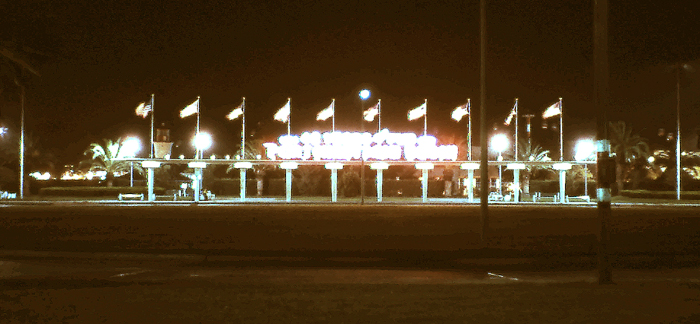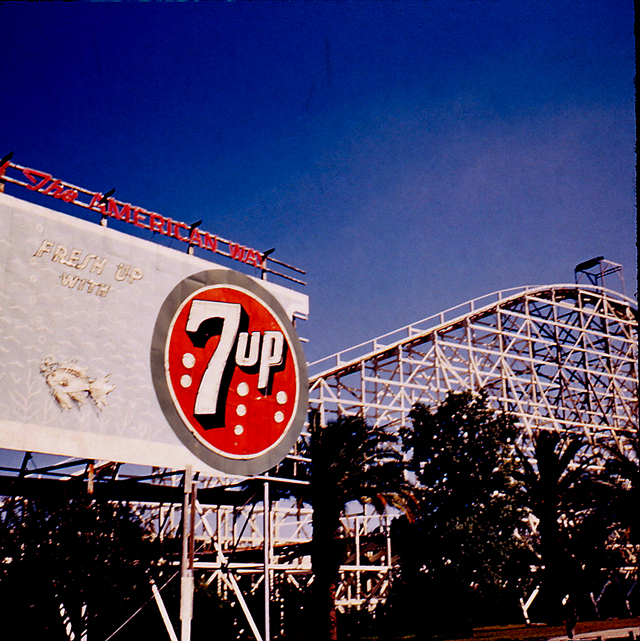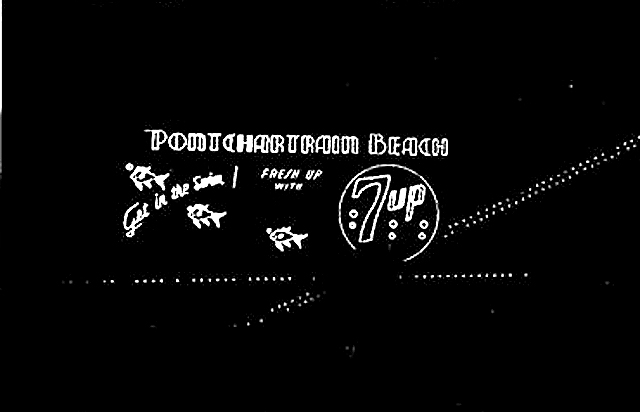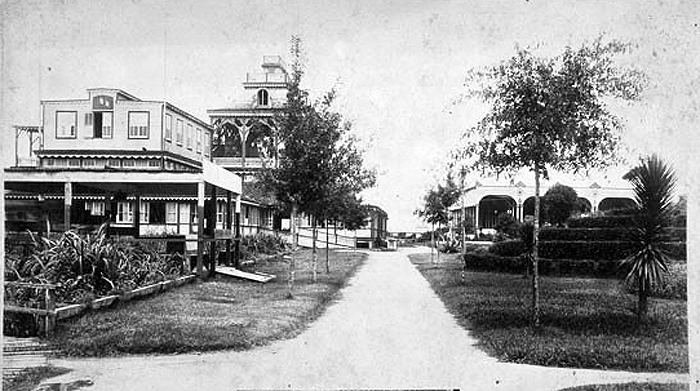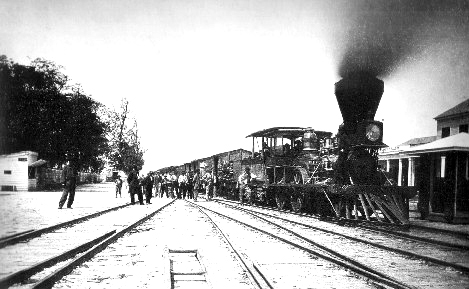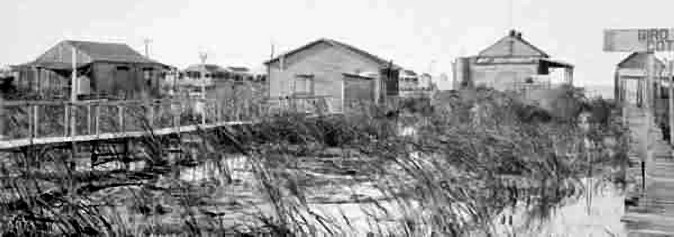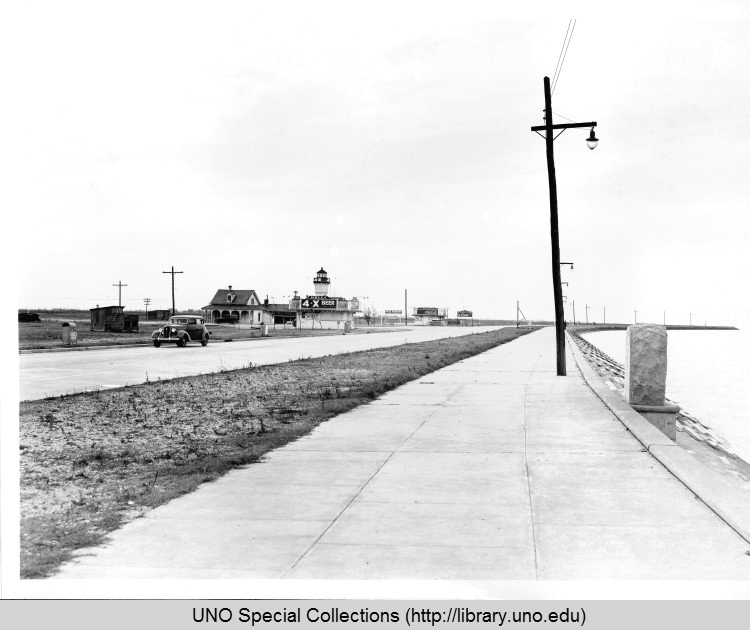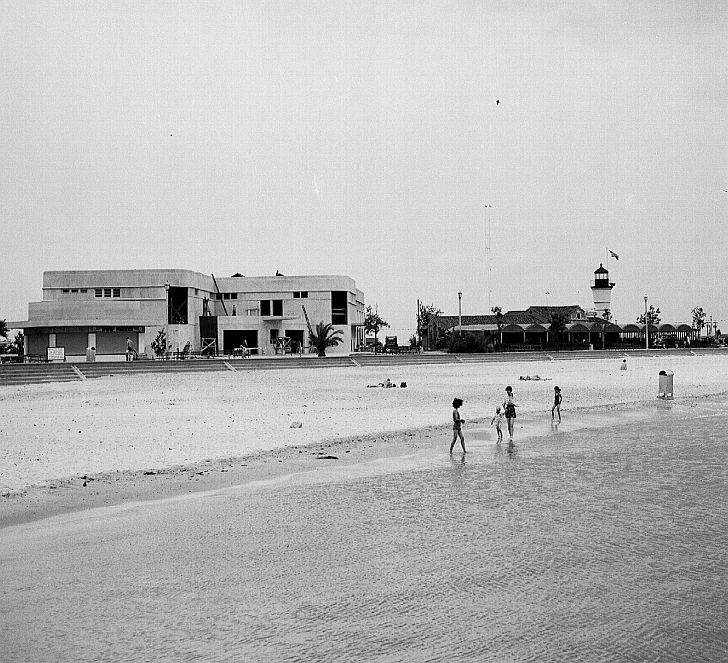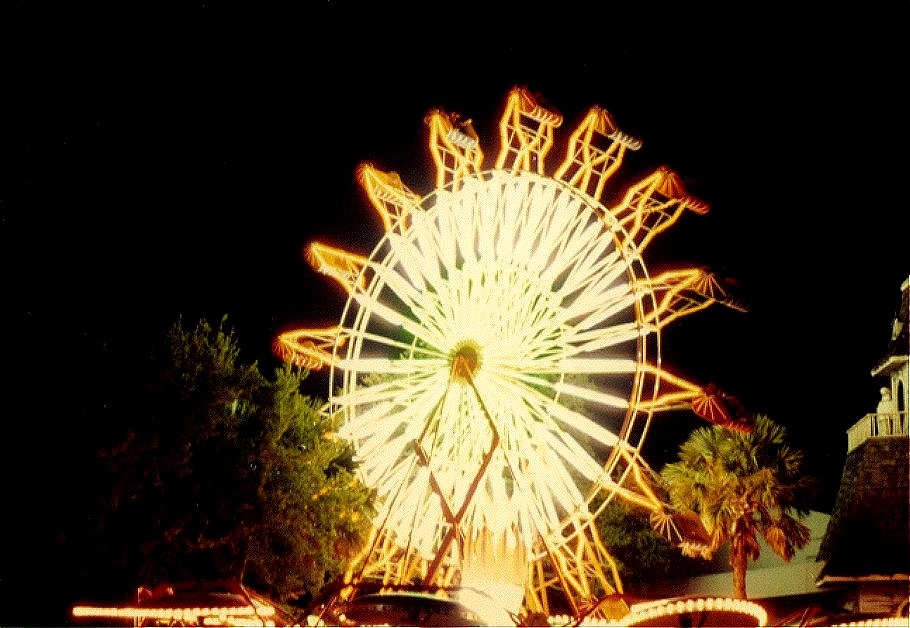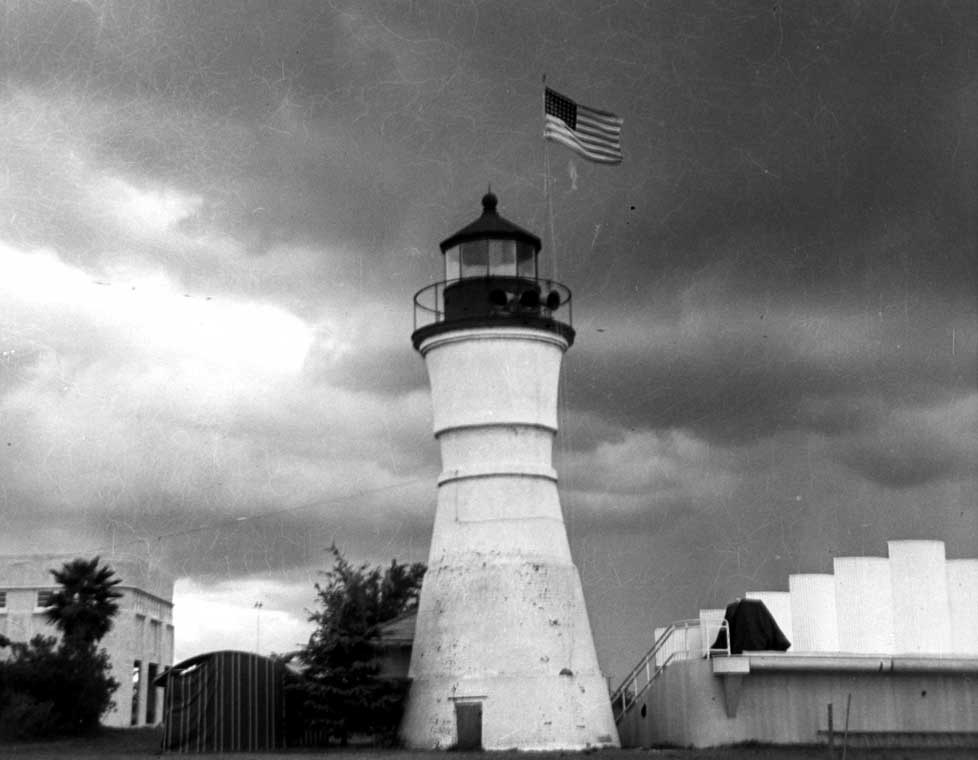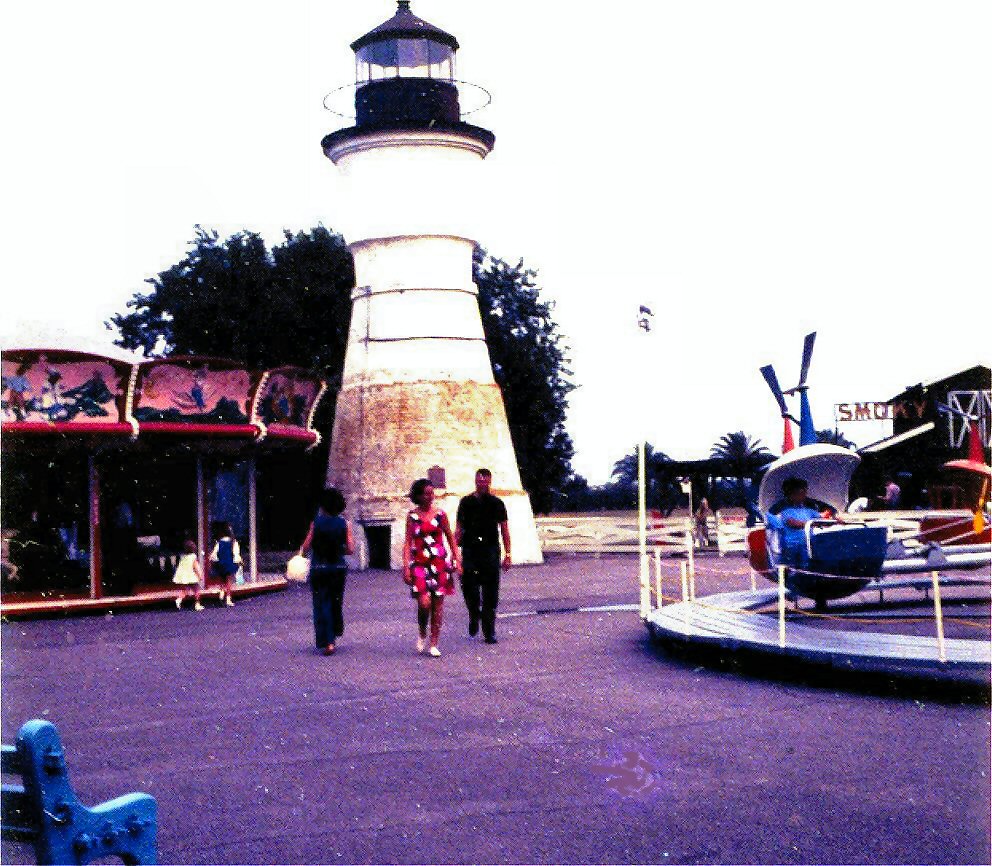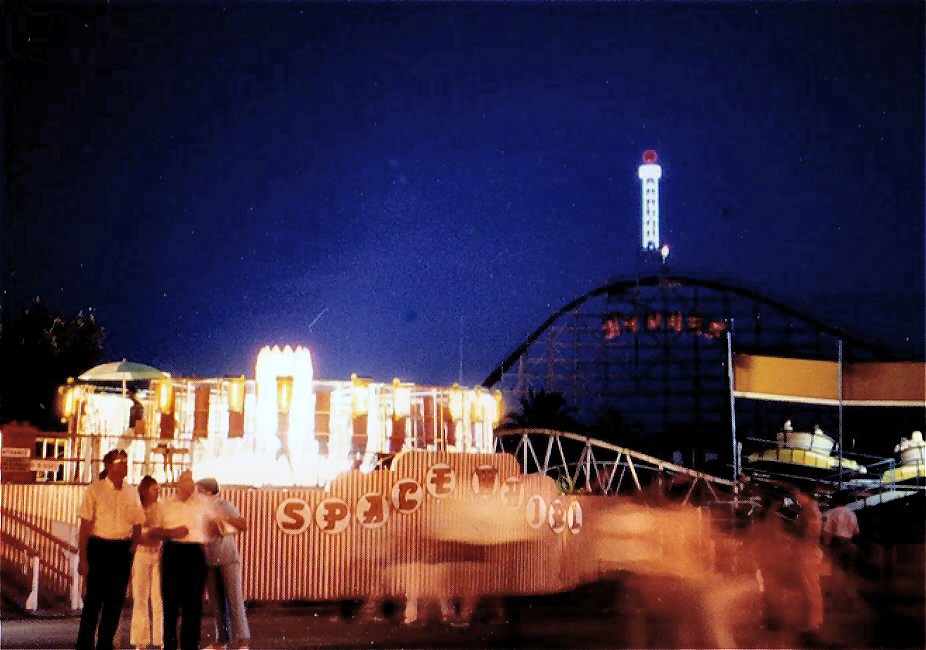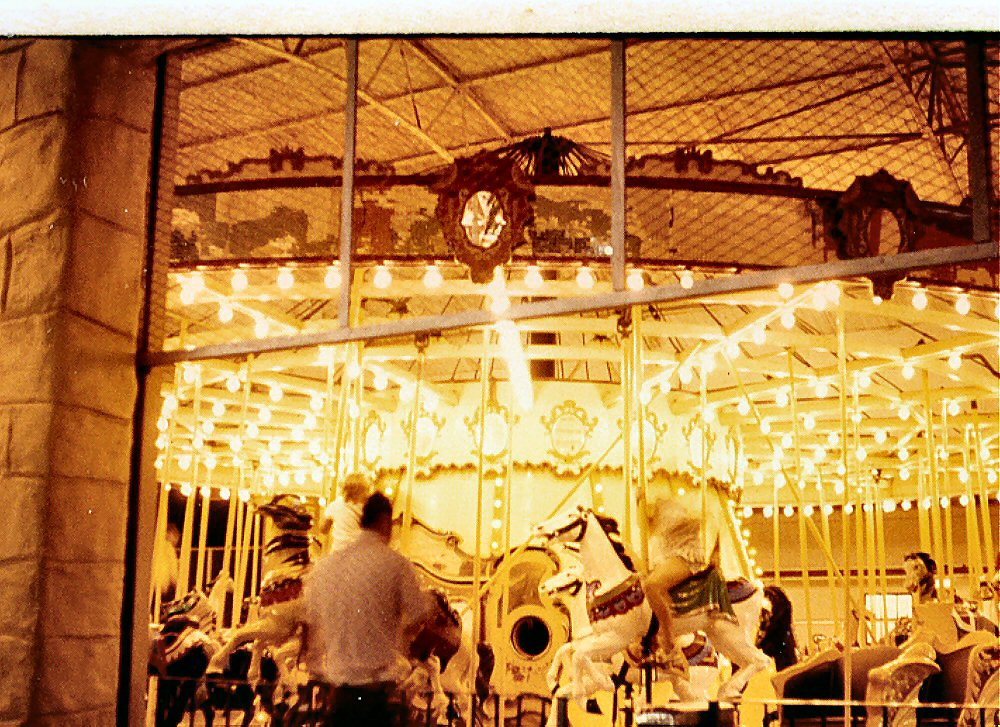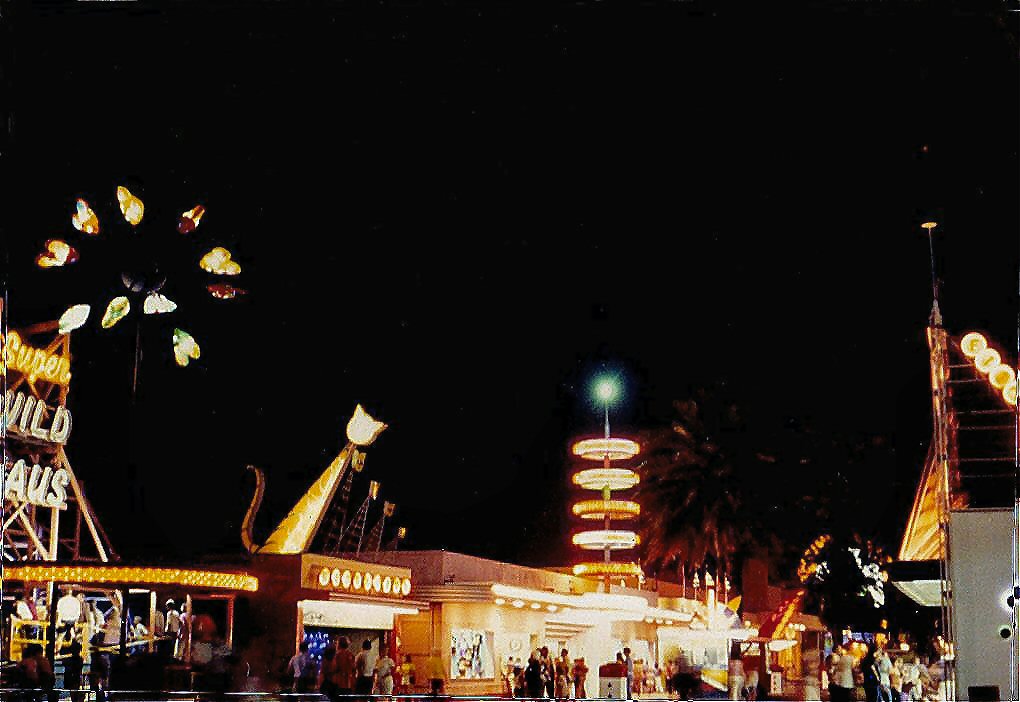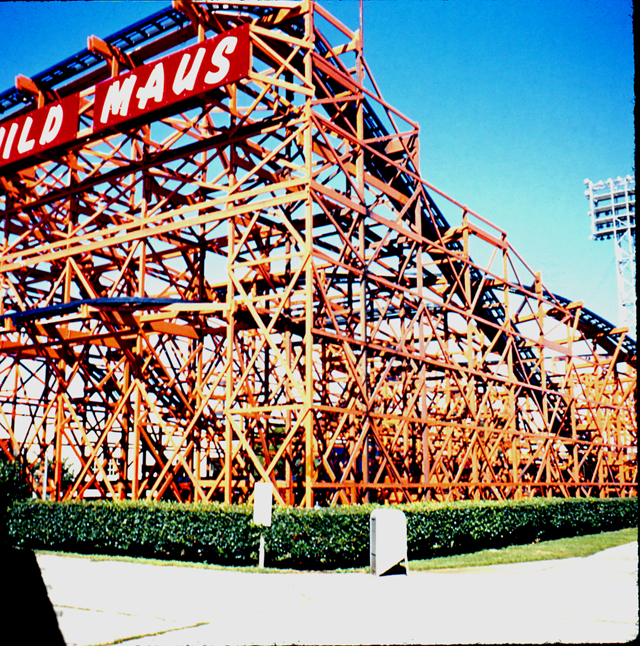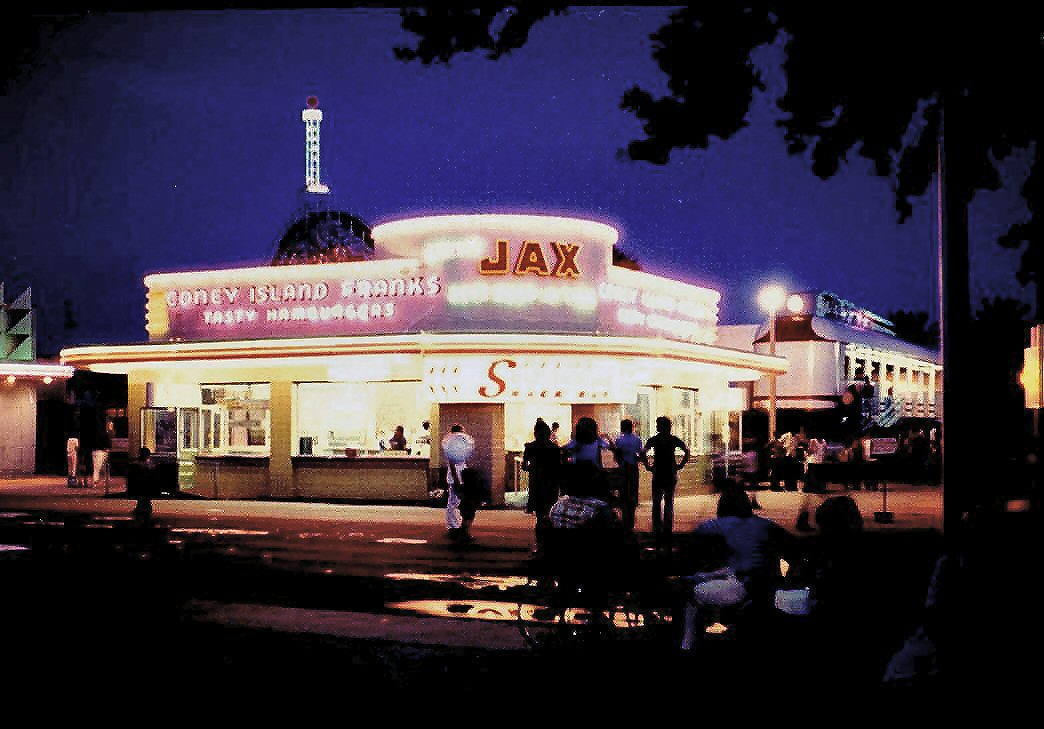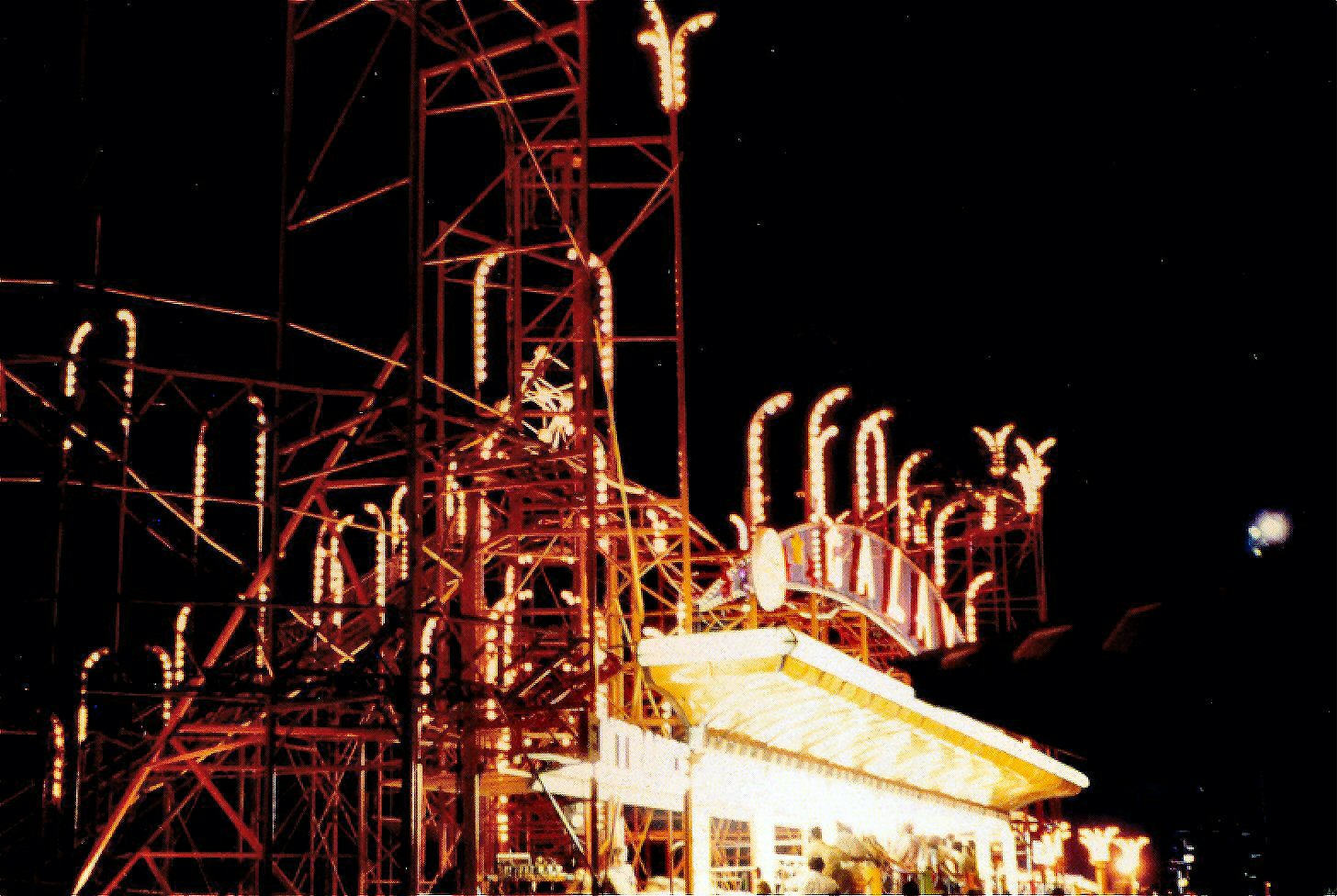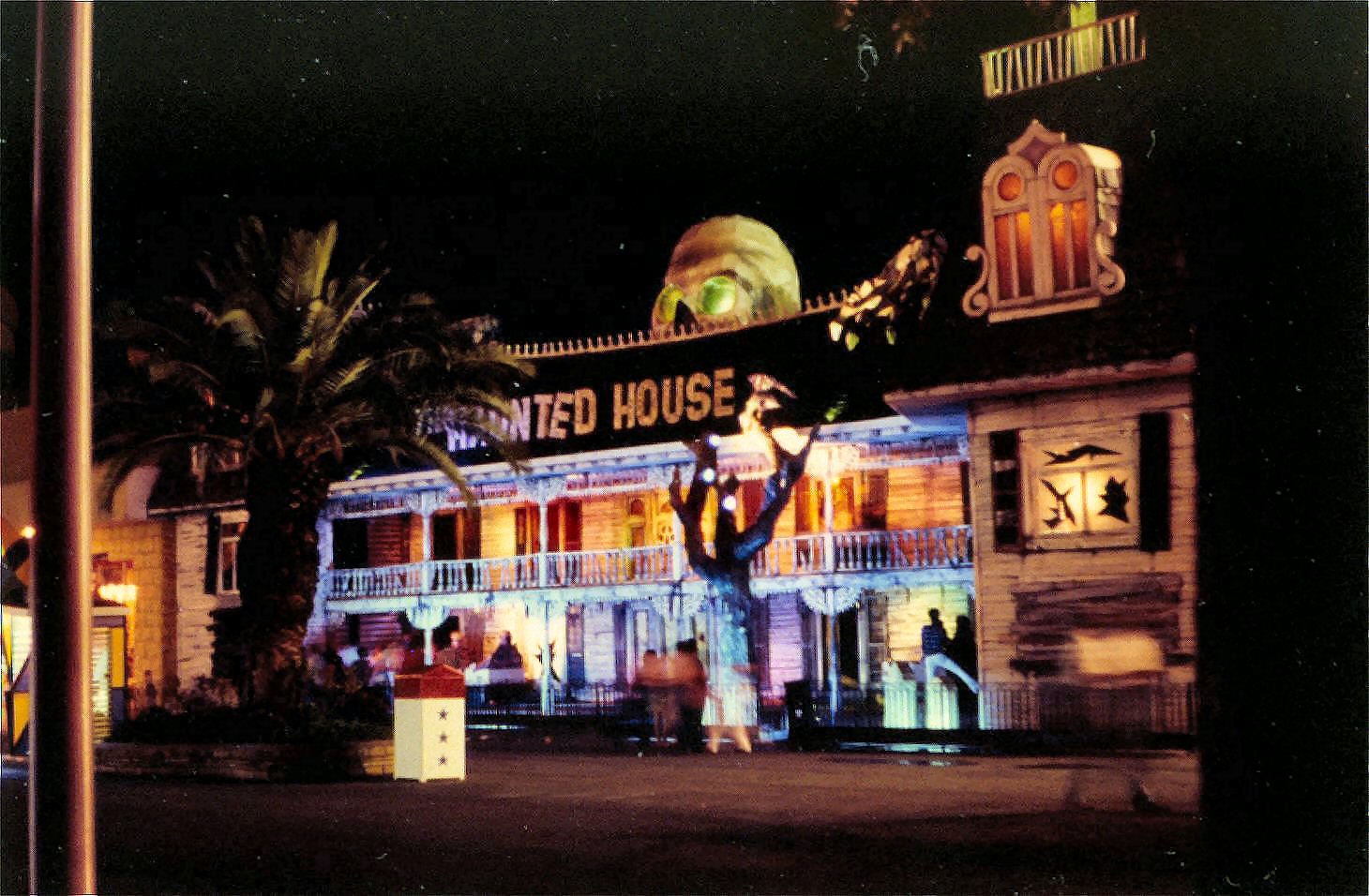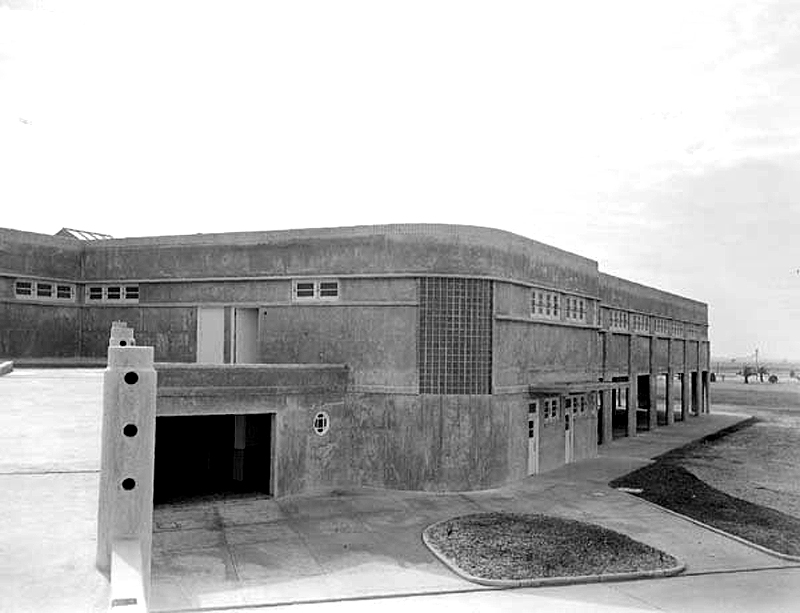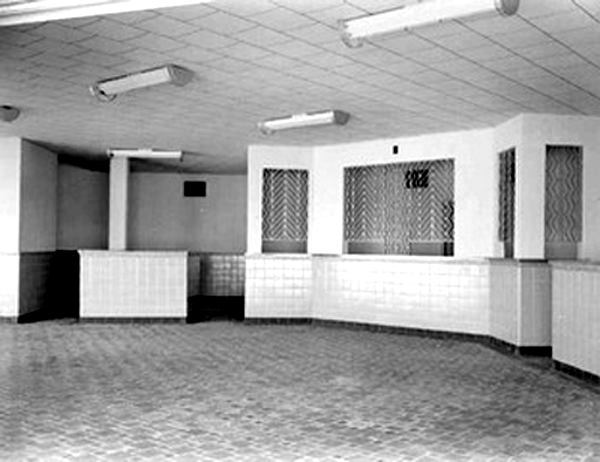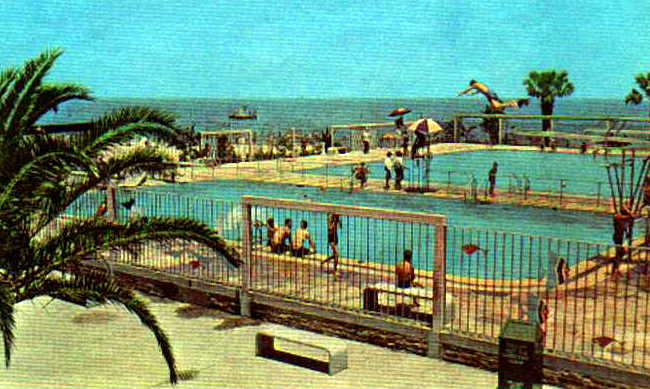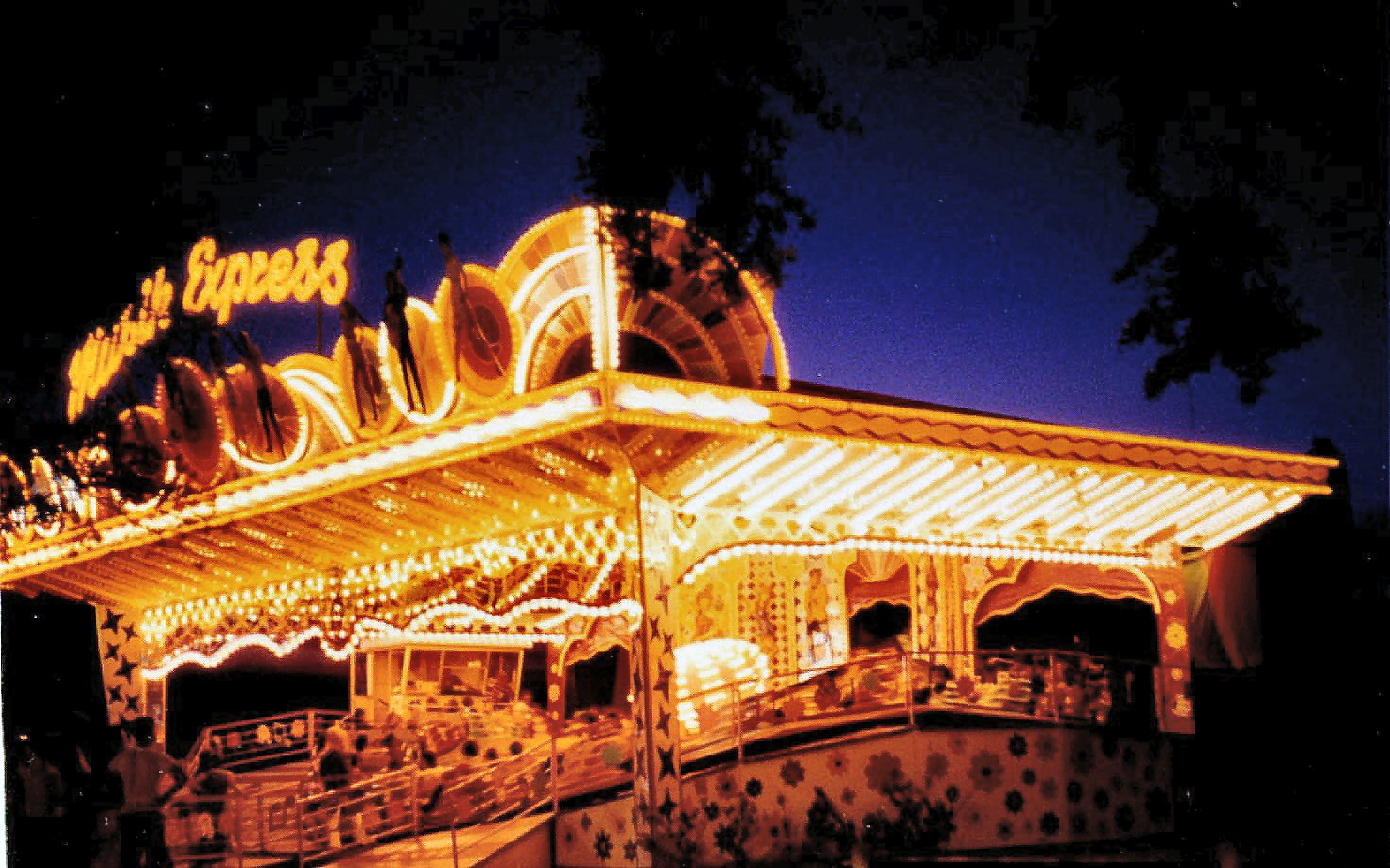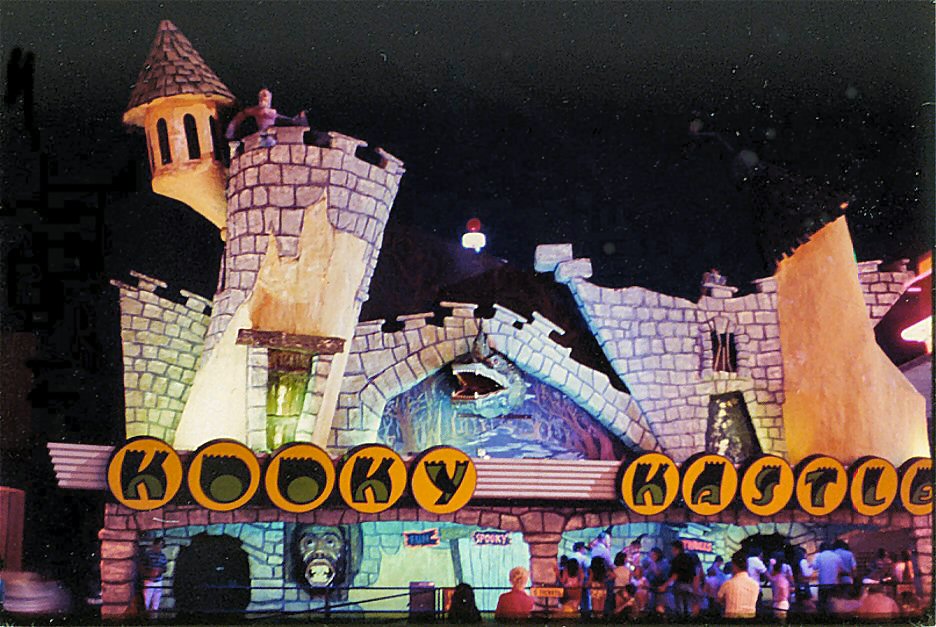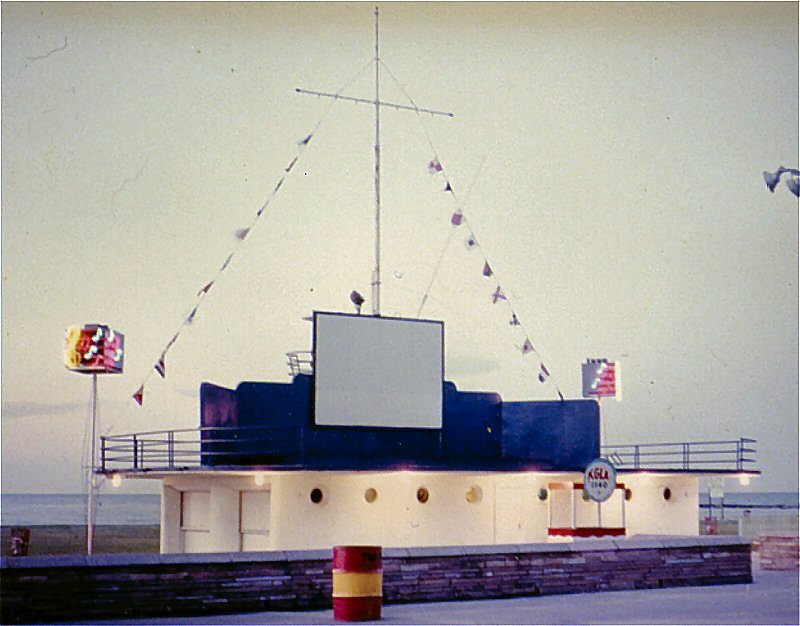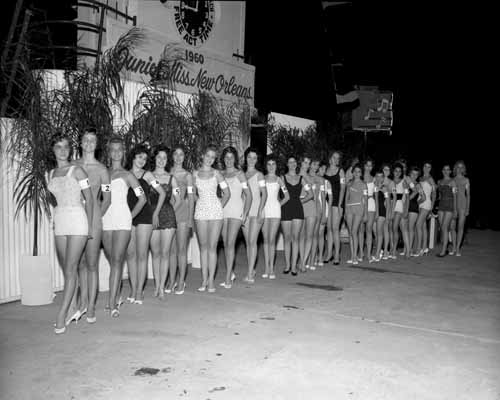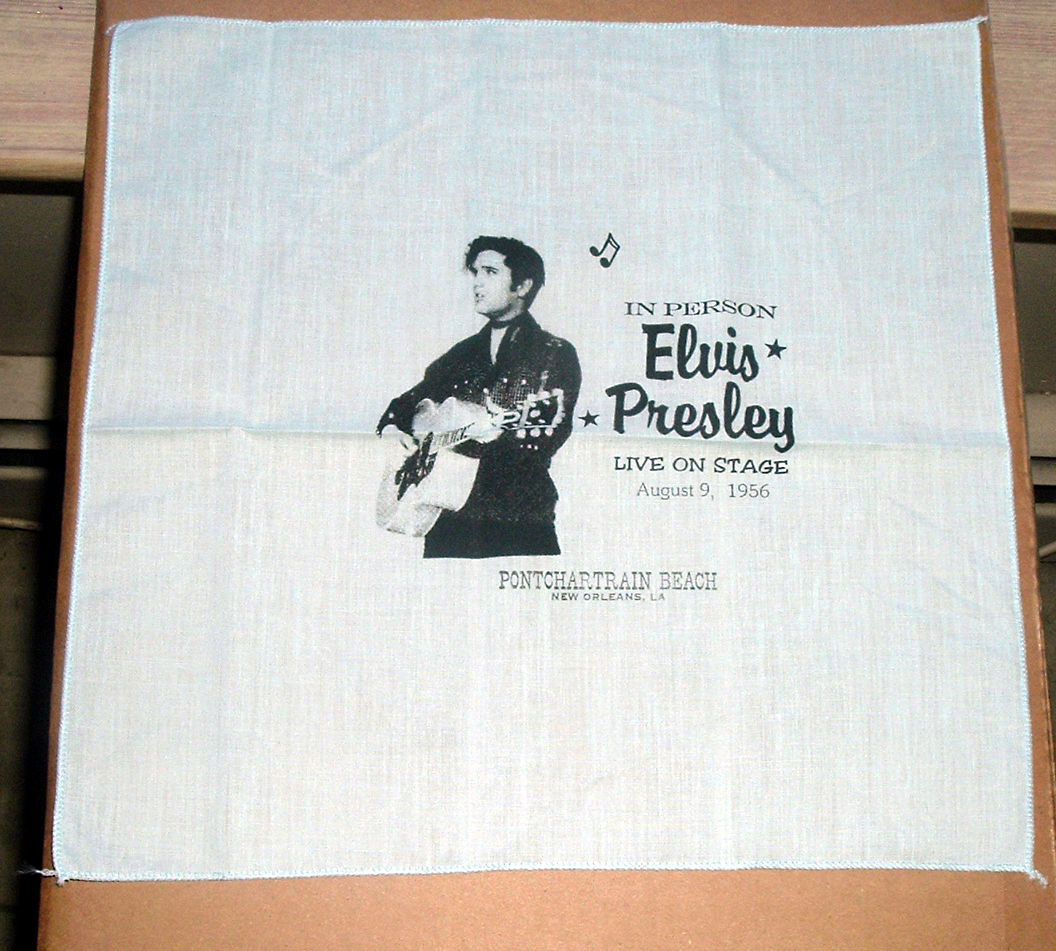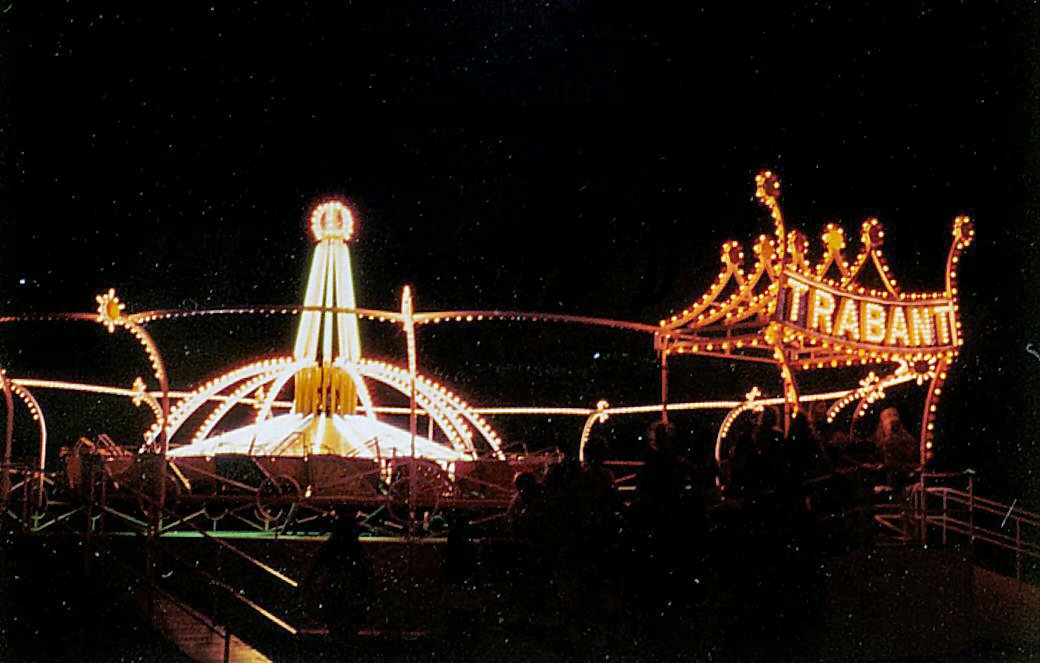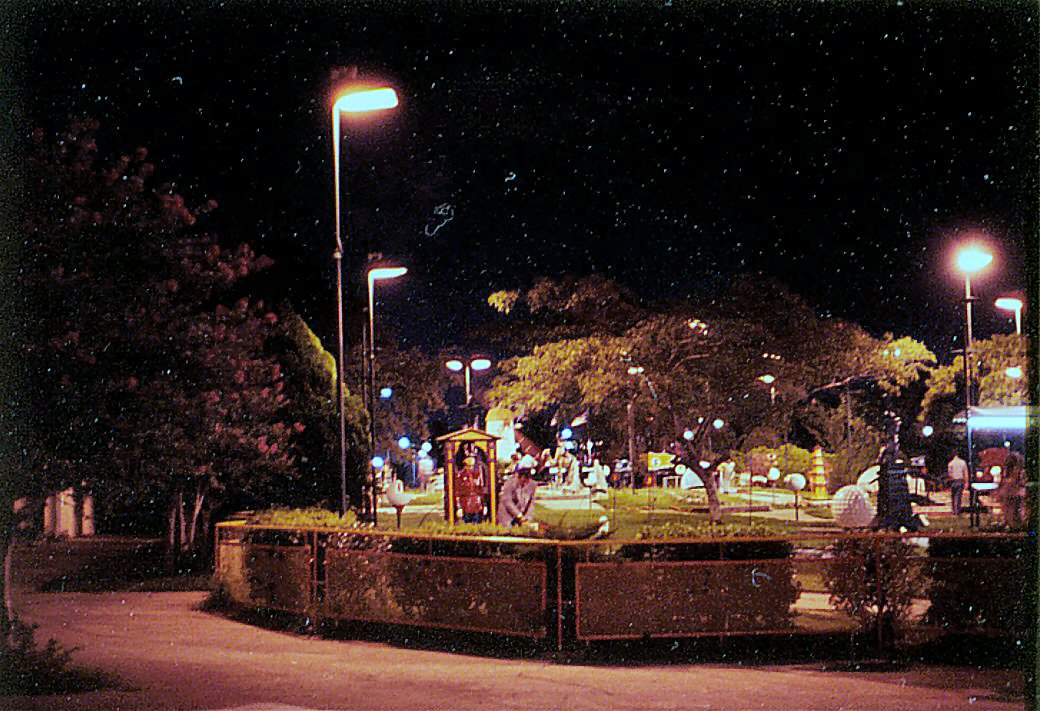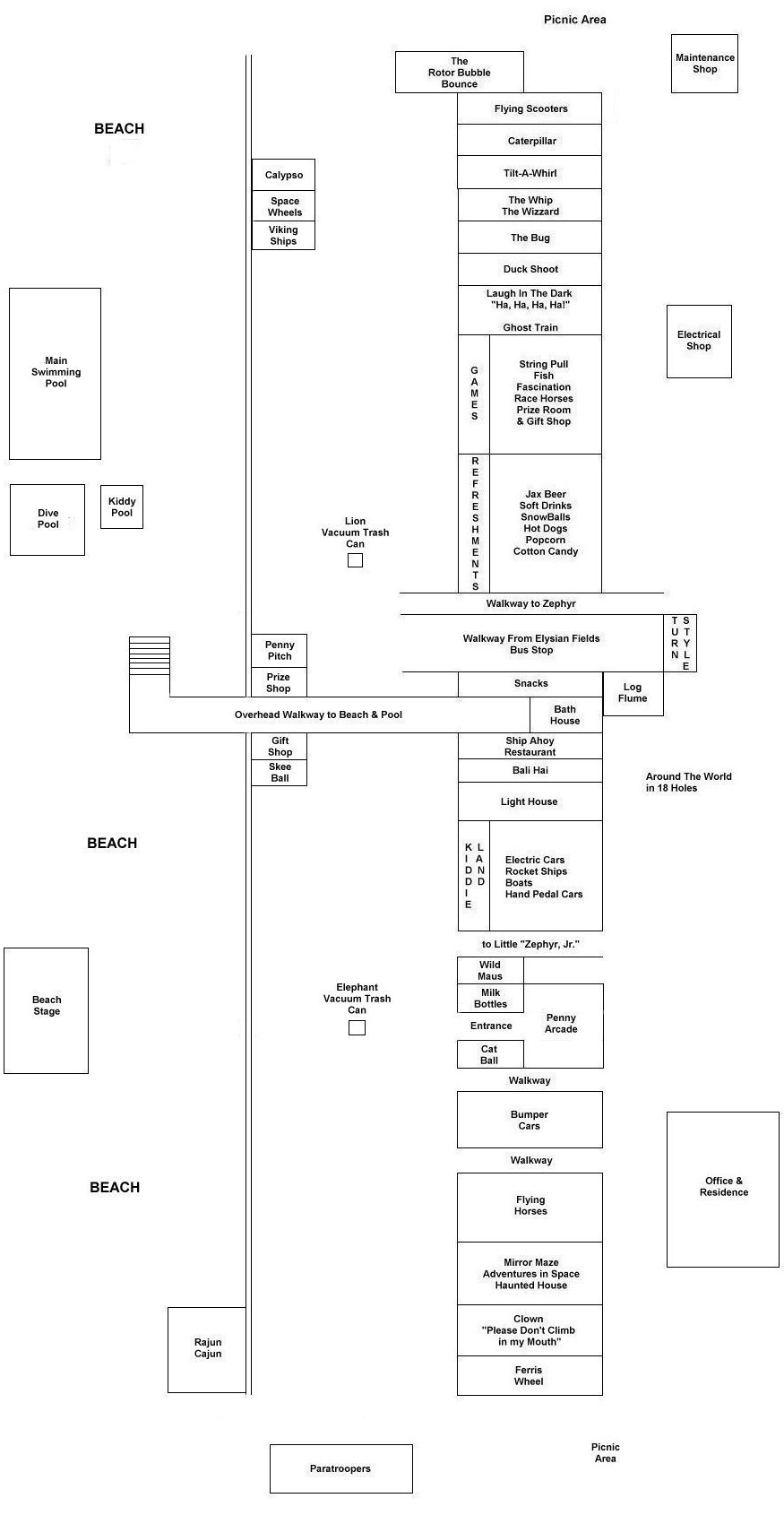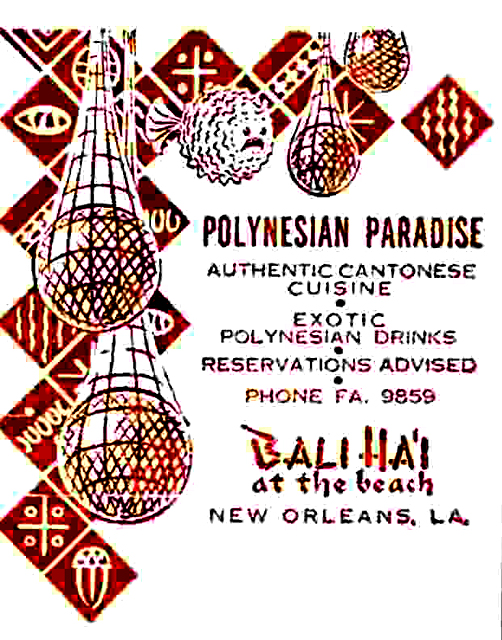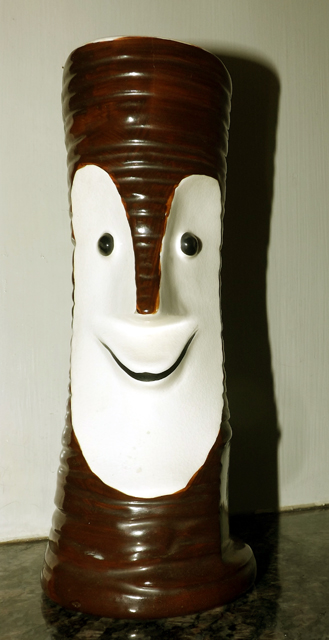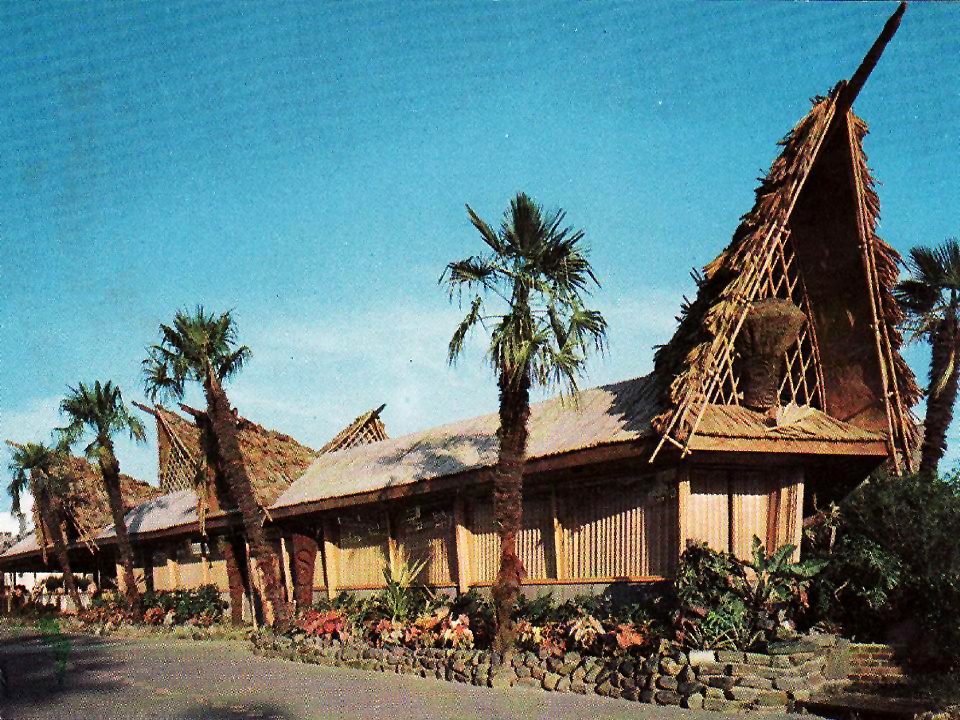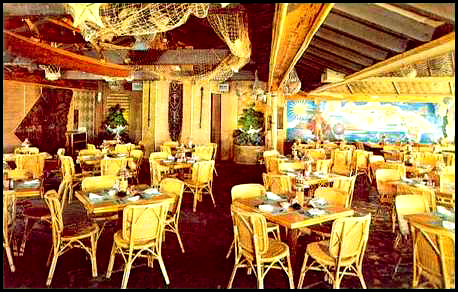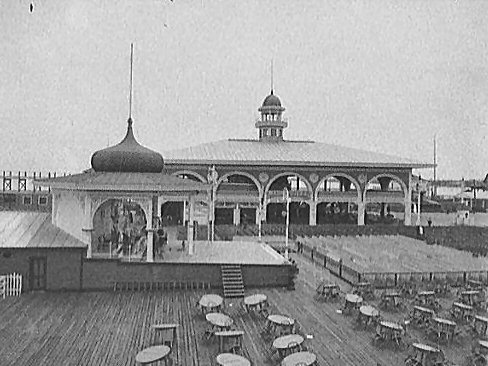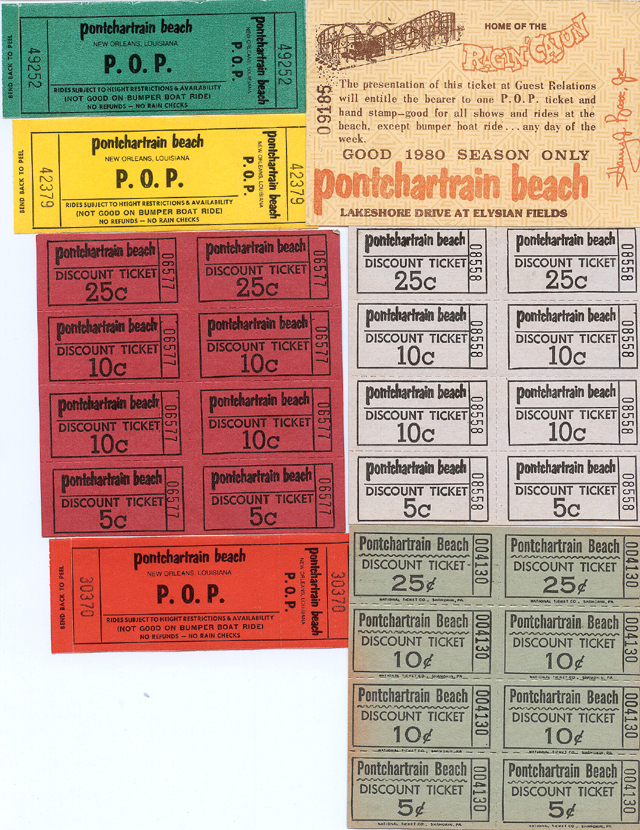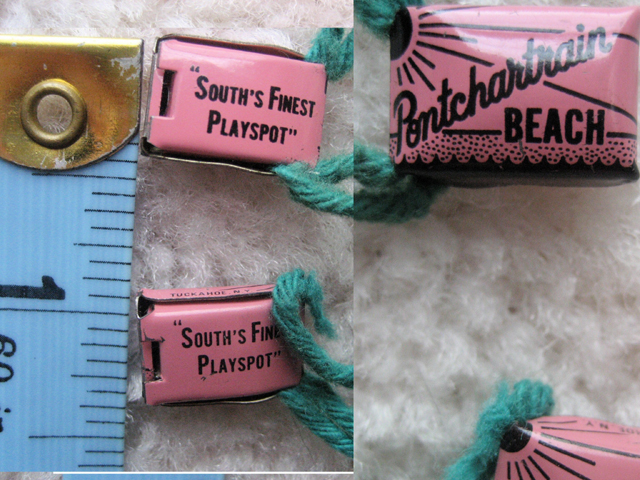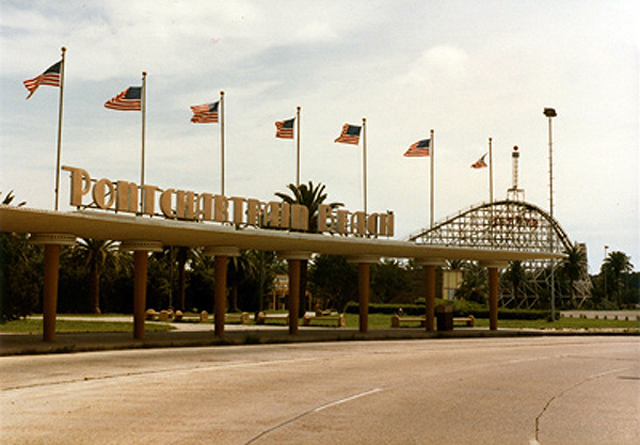Memories of
Pontchartrain
Beach
Presented by The Museum Of Yesterday
|
| As New Orleanians
remain scattered across the land, it seemed like a good time to remember
a New Orleans of a kinder, gentler time. For those of us who grew up in
the Crescent City during the middle of the last century, no fonder memories
exist than those of Pontchartrain Beach Amusement Park. The Beach was our
answer to Coney Island or Balboa Park, and many happy memories were made
there. I hope that this page will bring some pleasant memories of the old New Orleans that
once was a great place to live, play and raise your family. |
| |
| Approaching the entrance
to Pontchartrain Beach from Elysian Fields Avenue. (Photo by John
DeMajo) |
| |
| PONCHARTRAIN BEACH
was a popular attraction in New Orleans in the years between 1929 and 1983. The beach at the end of Elysian
Fields was actually the third amusement park in the city's history to
be located along the New Orleans Lakefront. In the late 1800's West End
featured a board walk with mechanical amusement rides, live concerts,
dining establishments and an outdoor theatre featuring silent films. Later,
a new park and resort evolved on the site of the old Spanish Fort at the location where
Bayou St. John meets Lake Pontchartrain The Batt family, owners of a New
Orleans ice manufacturing plant, began their involvement in amusement
parks as a provider of ice for the Spanish Fort park. Later, Harry Batt
formed Playland Amusements, a company which owned and operated several of the city's amusement
parks including Pontchartrain Beach. |
| |
|
|
Many "Boomers" will remember this animated 7up Sign at the entrance to the Beach. The sign featured swimming fish, fashioned in neon lighting, with lighted bubbles surfacing as they swam. Note that the beacon is missing from atop the Zephyr in the top photo. The original beacon was destroyed in Hurricane Betsy and it was later replaced with a new larger beacon. The 7up sign disappeared in the late 1960's, but after years of searching for a photo of it, these photos, courtesy of Dennis Persica, should bring back some memories for New Orleanians of that era. |
| |
THE HISTORY OF PONTCHARTRAIN BEACH |
|
A view of the previous amusement park at Spanish Fort
(Historic photos courtesy of the LOUIS Digital Library- State of Louisiana) |
| |
|
The resort town of Milneburg as it appeared around 1890.
(Note that the Milneburg Light was a half-mile out in the lake prior to the Orelans Levee Boardland reclamation project of the 1930's.)
Milneburg, unlike its more upscale neighbor West End, was popular with working class New Orleanians. The resort catered to average New Orleanians of all races, and many of the city's legendary jazz bands became popular due to their public performances at The Midway Bar, which was the most notable entertainment establishment in the area. It was the success of this model, and the entertainment traditions that it sparked, that prompted the Orleans Levee Board, with WPA assistance, to provide for a continuing amusement and sand beach swimming area in the design of the land reclamation project.
|
| |
|
Milneburg became a popular resort thanks to the creation of the Pontchartrain Railroad. The photograph above shows the railroad's "Smokey Mary" as she prepares to depart from the depot near the Mississippi River wharves at what is now Elysian Fields Avenue. |
| |
|
This is a view of the the camps at Milneburg dating to around 1905. Most of the camps perished in a fire that occurred around 1923. In 1921, the reclamation project was begun when the City of New Orleans filled in the lake in the area of the boardwalk at West End, thereby proving that land could be created through a process that involved dredging sand from the lake bottom and pumping it behind a retaining bulkhead. . The plan was so successful that developers began to envision an entire new development extending along the 10 mile lake shore from the Southern Railroad bridge at the Industrial Canal, to West End. The 1923 fire that destroyed Milneburg was looked upon with suspicion by many for that reason, as the removal of the formerly successful camp resort would have represented a major political hurdle. A financial slump in the early 1920's, followed by the Great Depression of 1929, saw the plans placed on hold for ten years following the fire, however, the Orleans Levee Board and WPA recovery effort, made it possible to restart the project in the 1930s. |
| |
|
In the photo above, area along the lakefront had been reclaimed. Note that the Milneburg lighthouse, which was located well out into the lake in the preceding picture above, stands well behind the shore line in the photo directly above. Shortly after this photo was taken, Harry Batt, Sr., whose ice manufacturing company provided ice to the Spanish Fort park, purchased the assets of the
old Spanish Fort rides, and moved the park to this newly available location at the end of Elysian Fields Avenue. During the 1930's, the Orleans Levee Board, with funding by the Works Progress Administration, reclaimed land along the shore of Lake Pontchartrain in what was originally the resort town of Milneburg. Milneburg was accessible by the old Pontchartrain Railroad which ran from Elysian Fields near the river, out to the resort which was off of the shore at what later became the location of UNO and Pontchartrain Beach. As part of that land reclamation project, several features were designed into the project, including a concrete bath house, provisions for concessions, and a sand beach that stretched almost a mile in length. This ambitious project also resulted in the construction of the Lakefront Airport at the Industrial Canal end of the developed lakefront. Harry Batt saw the opportunity to further develop this tract of newly created land, and he and his company proceeded to move their recently acquired amusement park from its previous Spanish Fort location, to the new beach at the end of the developing Elysian Fields Avenue corridor.
Later, in the 1940's, war-time facilities began to utilize the large amount of new land that had been created between West End and the Industrial Canal, and the city saw the creation of the original Naval Air Station (on what is now the UNO main campus, Camp Leroy Johnson, the Consolidated Vultee Aircraft plant, and a huge military hospital which was located along the lake shore between Canal Boulevard and West End. The improvements and traffic created by these War developments, caused patronage at Pontchartrain Beach to skyrocket, assuring the park's continuing success well into the 1970's.
|
| |
|
| A view of the Pontchartrain Beach location, circa 1935. In this photo, contractors and WPA workers were completing the bath house, and the sand beach had been created. At this point, however, the amusement park was still located at Spanish Fort had not yet been moved to this location (Photo courtesy LOUIS Digital Library) |
| |
| |
| The Ferris Wheel,
a signature ride at the Beach, whisked riders seventy-five-feet above
the Midway, providing an outstanding view of the city and the lake. The
Zephyr, however, was probably the beach's most famous ride through most
of its history. (Photo by John DeMajo)
|
| |
| The landmark Milneburg Lighthouse became the center piece for the beach's "Kiddieland," an area of scaled-down rides for smaller children who could not safely ride the full-scale rides. Below are photos of the lighthouse in 1936 prior to the amusement park moving to the location, and again in the 1970s when the "Kiddieland" portion of the park was in full operation. |
|
| |
| |
| |
Pontchartrain Beach boasted some of the
most modern and daring rides manufactured by American and European builders.
For many years, Harry Batt traveled the world in search of wilder and more
attractive rides for the park. At the rear of the photo is the aircraft
beacon, atop the Zephyr's highest hill, that could be seen from miles around. The beacon shown in this picture, replaced an original and less ornate beacon from the Zephyr's earlier days, which was destroyed in Hurricane Betsy. (Photo
by John DeMajo) |
| |
| |
| |
| The beach Carousel
dated back to the late 1800's. Although music was later provided by recordings,
the carousel contained a beautiful example of an air powered pipe organ
built by the Wurlitzer Company.
(photo by John DeMajo) |
| |
| |
The German designed WILD MAUS was one of the
first major rides that Harry Batt installed after World War II. For many years,
the Maus was a big drawing card for beach thrill-seekers. According to accounts of former beach employees and amusement ride historical sources, the Beach's Wild Maus was a copy of the German engineered ride, and was actually constructed in the maintenance shop located on the park's lakefront property. There were two distinct versions of the ride that evolved between the original 1950s installation and the latter days of the beach's history. The "Super Wild Maus," according to available information, evolved from design changes and additions to the original ride structure.
(photo
by John DeMajo) |
| |
|
This late 1960's photo, submitted by Dennis Persica, shows the base and structure of what had by then become the "Super Wild Maus." |
| |
| |
While most of the younger set went to the
beach to enjoy the rides and the water, there was no shortage of food, drink
or entertainment at the park. Whether
one's taste was for hot dogs, cotton candy or fine gourmet dining at the Bali Hai restaurant, the Beach
had something for everyone's taste. (photo by John DeMajo) |
| |
| |
| When
it arrived at the Beach, the Galaxy was touted as one of the most exciting
rides ever built. (photo by John DeMajo) |
| |
| |
The Haunted House was a popular attraction
with the younger set. As the cars snaked along the semi-dark halls lined
with ghouls and creepy characters from our worst nightmares, many a
kiss was exchanged in the dark amongst the riders.
(photo by John DeMajo) |
| |
|
The beach's bath house as it appeared upon completion. When Playland Amusements acquired the lease to the one-mile stretch of the newly created Lakeshore Drive sand beach, this fixture became part of Pontchartrain Beach Amusement Park. The photo below was a publicity photo used to illustrate the public works improvements being funded through the WPA. It shows the interior lobby of the bath house. Later, when 1960's lake water pollution scares surfaced, Mr. Batt constructed two huge in-ground pools at this site so that bathers could continue to swim at the beach without having to chance becoming infected by the high pollution counts in the lake. (Photos courtesy of LOUIS Digital Library, State of Louisiana. ) |
|
| |
|
This photo, taken from an old post card, shows the pools that were constructed to allow swimming when the lake waters were polluted. |
| |
| |
Another ride brought in by Harry Batt in
the 1960's heyday of the Beach was the Music Express which featured cars
that spun in a circle while on a platform that spun in the opposite direction.
It was definitely not a ride for the faint of heart, or stomach for that
matter, (photo by John DeMajo) |
| |
| |
While somewhat milder than the Haunted House,
the Kooky Kastle dealt its own variety of ghoulish sensationalism. In the War and Post War years, this ride originally was called "Laugh In The Dark" but its named changed with improvements made in the late 1950s.
(photo by John DeMajo) |
| |
| |
This unique outdoor
stage, located at the center of the Midway, hosted some of the world's
most famous talent. From concerts to daring circus acts, to beauty contests,
to an appearance by Elvis Presley, the Beach Stage was unparalleled for entertainment in
the New Orleans area. And the shows were FREE to all Beach patrons.
Throughout the beach's history, and particularly following World-War II, the Batt Family brought some of the world's most famous high wire and circus acts to this stage. Also notable were the Miss New Orleans and other such beauty contests presented from the beach stage. Later, in the 1970s, the stage became the venue for open air concerts featuring popular rock bands of the day. Those later concerts were sponsored in conjunction with some of the city's rock music radio stations such as WNOE, WTIX and later WRNO-FM. (photo above by John DeMajo)
Below, one of the many beauty contests held on the beach stage over the years. (photo from LOUIS Digital Library)
|
|
| |
|
One of the Beach's more notable outdoor performances was a visit by the legendary Elvis Presley in 1956. This poster, dating to the year of that appearance, is owned by the museum and resides in the Museum of Yesterday's Pontchartrain Beach collection.
The handkerchief below was also a souvenir from the Elvis appearance at the Beach. The photo was shared with us by Edwin, a viewer of our site.
|
|
| |
| |
Like the Galaxy, Music Express and Wild
Maus, the Trabante tested the courage, endurance, and digestive system of
the rider. (photo by John DeMajo)
|
| |
| |
When Putt-Putt Golf became popular, Harry
Batt added a championship miniature course to the Beach. It was one of the
finest Putt-Putt courses in the nation. (photo
by John DeMajo) |
| |
Below is a map of the layout of the rides, buildings and fixtures at Pontchartrain Beach. |
|
| |
BALI HAI AT THE BEACH |
|
Almost as popular as the Beach itself, was the Bali Hai, an upscale Polynesian Restaurant which Harry Batt opened later in the history of the park. This famous trademark drink container (shown below) was familiar to those who frequented the restaurant and ordered the signature drink. (Photo of actual artifact housed in the Museum Of Yesterday's Pontchartrain Beach collection.)
For many New Orleanians, the Bali Hai was a place fondly remembered for special dining occasions, prom night dinners, parties, and family gatherings. |
|
| |
|
Exterior (above) and interior (below) of the Bali Hai as it appeared in the 1970s. |
|
| |
| |
This is a photo of the West End boardwalk
amusement area and restaurant, which became a model for the development of Spanish Fort and later the Pontchartrain Beach Amusement
Park..(Historic photos courtesy New Orleans Public Library) |
| |
|
An assortment of ride tickets from the Museum Of Yesterday's Pontchartrain Beach collection |
| |
Throughout its history, the Beach offered many promotions designed to draw patrons. Pay-One-Price was a popular promotion during the era when the park was trying to boost attendance after instituting its gate admission charge in response to court-forced integration of the park in the 1960's. The wrist bands shown below served as proof-of-purchase of beach admission in the pay-one-price promotion. |
|
| |
PLEASE NOTE: I am interested in obtaining
copies and "rights of display" of additional photographs of Pontchartrain Beach, the old Steer-Inn restaurant which was located on Elysian Fields Avenue, as well as any other interesting Gentilly or Lakefront related subject material.
If you are viewing this site and happen to have interesting photos to share, I will be happy to display your photos, provided that they are your property to legally display, and to give you credit here on the page if you wish.
|
|

This web site is maintained by John DeMajo, and is a service of The Museum Of Yesterday, Chesterfield, VA.
© Copyright 2023 - The Museum Of Yesterday
|
